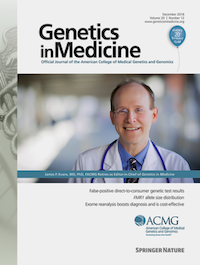For most people with GSD3 diagnosis will come early in life. The challenges tend to become a bit less as they grow up.
Diagnostic and management guidelines
There are two sets of detailed guidelines prepared by international groups of eminent professionals. Both papers can be considered current, but one is more recent than the other.
Note that these papers use the term “GSD Type III” rather than our preferred “GSD3”.
Journal of Inherited Metabolic Disease, April 2016
These guidelines were prepared by a group led by Dr Terry Derks of the University of Groningen Medical Centre, The Netherlands, and published in the Journal of Inherited Metabolic Disease, April 2016; Volume 39 – pp697-704.
 The full text of this paper is available free of charge under open access arrangements.
The full text of this paper is available free of charge under open access arrangements.
 Download a PDF of the GSD3 guidelines.
Download a PDF of the GSD3 guidelines.
Abstract
Glycogen storage disease type III (GSDIII) is a rare disorder of glycogenolysis due to AGL gene mutations, causing glycogen debranching enzyme deficiency and storage of limited dextrin. Patients with GSDIIIa show involvement of liver and cardiac/skeletal muscle, whereas GSDIIIb patients display only liver symptoms and signs.
The International Study on Glycogen Storage Disease (ISGSDIII) is a descriptive retrospective, international, multi-centre cohort study of diagnosis, genotype, management, clinical course and outcome of 175 patients from 147 families (86 % GSDIIIa; 14 % GSDIIIb), with follow-up into adulthood in 91 patients. In total 58 AGL mutations (non-missense mutations were overrepresented and 21 novel mutations were observed) were identified in 76 families. GSDIII patients first presented before the age of 1.5 years, hepatomegaly was the most common presenting clinical sign. Dietary management was very diverse and included frequent meals, uncooked cornstarch and continuous gastric drip feeding. Chronic complications involved the liver (hepatic cirrhosis, adenoma(s), and/or hepatocellular carcinoma in 11 %), heart (cardiac involvement and cardiomyopathy, in 58 % and 15 %, respectively, generally presenting in early childhood), and muscle (pain in 34 %). Type 2 diabetes mellitus was diagnosed in eight out of 91 adult patients (9 %). In adult patients no significant correlation was detected between (non-) missense AGL genotypes and hepatic, cardiac or muscular complications. This study demonstrates heterogeneity in a large cohort of ageing GSDIII patients. An international GSD patient registry is warranted to prospectively define the clinical course, heterogeneity and the effect of different dietary interventions in patients with GSDIII.
Genetics in Medicine, July 2010
These guidelines were prepared by a group led by Dr Priya Kishnani of the Duke University Medical Center and published in Genetics in Medicine July 2010 – Volume 12 – Issue 7 – pp446-463.
 The full text of this paper, sponsored by the American College of Medical Genetics, is available free of charge.
The full text of this paper, sponsored by the American College of Medical Genetics, is available free of charge.
 Download a PDF of the GSD3 guidelines.
Download a PDF of the GSD3 guidelines.
Abstract
Glycogen storage disease type III is a rare disease of variable clinical severity affecting primarily the liver, heart, and skeletal muscle. It is caused by deficient activity of glycogen debranching enzyme, which is a key enzyme in glycogen degradation. Glycogen storage disease type III manifests a wide clinical spectrum. Individuals with glycogen storage disease type III present with hepatomegaly, hypoglycemia, hyperlipidemia, and growth retardation. Those with type IIIa have symptoms related to liver disease and progressive muscle (cardiac and skeletal) involvement that varies in age of onset, rate of disease progression, and severity. Those with type IIIb primarily have symptoms related to liver disease. This guideline for the management of glycogen storage disease type III was developed as an educational resource for health care providers to facilitate prompt and accurate diagnosis and appropriate management of patients.
This management guideline specifically addresses evaluation and diagnosis across multiple organ systems (cardiovascular, gastrointestinal/nutrition, hepatic, musculoskeletal, and neuromuscular) involved in glycogen storage disease type III. Conditions to consider in a differential diagnosis stemming from presenting features and diagnostic algorithms are discussed. Aspects of diagnostic evaluation and nutritional and medical management, including care coordination, genetic counseling, hepatic transplantation, and prenatal diagnosis, are addressed.
